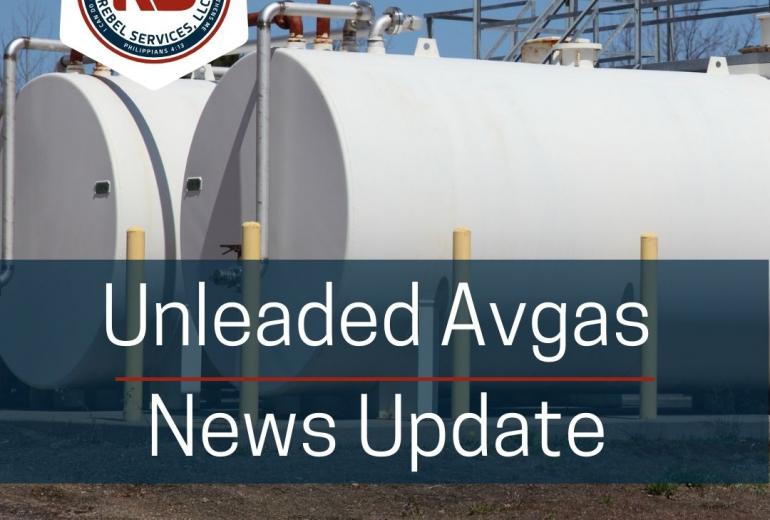Leaded fuel has been banned in the United States for over two decades, since 1996, but it was allowed for aircraft because there hasn’t been a suitable alternative—until now. However, there has been remarkable headway in the development of unleaded avgas. At the end of 2022, the FAA approved a replacement for 100LL fuel, and they’re pushing for unleaded fuel by 2030.
What Lead Can Do to You
According to studies, exposure to lead has been linked to a lot of health and developmental issues. For example, before leaded fuel was banned in vehicles, according to a study that had been done, car exhaust with lead emissions lowered the IQ of at least half of the population. If inhaled or ingested, lead can also affect the nervous system, red blood cells, and both the cardiovascular and immune systems. And, in infants and small children, lead can cause developmental issues such as behavioral or learning problems. Given the knowledge of what lead can do, why is there still lead in avgas? And that’s a question the FAA and other aviation partners have worked on answering.
Low Lead Levels in Avgas
Without the addition of TEL (Tetraethyl Lead), avgas wouldn’t work correctly. The octane levels in the fuel would be too low, and if the octane levels are low, that could cause engine failure if the TEL additive wasn’t in the fuel. This is the reason why there is still a low level of lead in aviation fuel. And the amount of lead has proven not to be too harmful, but there’s still a little worry about what it might do. Until recently, though the FAA has been looking for a safe alternative for low-lead fuel for years, there hasn’t been a way to create fuel without at least a small amount of lead.
What’s Being Done about Lead in Avgas
The EPA (Environmental Protection Agency) and the FAA have been given the authority to regulate engine emissions since the Clean Act in 1996. However, the FAA hasn't been regulating the fuel, but they do uphold certain regulations for engines through the certification process of engines, which has helped reduce emissions through engine designs. In 2019, the FAA set up four initiatives in order to develop a safe unleaded fuel. This included appointing committees to find safe alternative fuels, getting permission to use unleaded fuel in engines, and asking private sectors to come up with new unleaded fuel formulas.
In 2022, the FAA partnered with aviation and petroleum stakeholders to form an initiative called EAGLE (Eliminate Aviation Gasoline Lead Emissions). Under the EAGLE initiative, government and industry actions and investments are to expand and move quickly when it comes to establishing policies and activities to permit general aviation aircraft to operate with lead-free fuel without compromising safety. The EAGLE initiative hopes to see all leaded avgas being used in the aviation industry replaced by unleaded avgas by 2030.
GAMI and the G100UL
General Aviation Modifications, Inc. (GAMI) has worked on and engineered a fuel alternative called the G100UL for over 13 years, and it was finally approved by the FAA at the end of 2022. GAMI’s 100LL fuel alternative can be used across the general aviation fleet, and no major modifications will be necessary for aircraft to use this fuel. GAMI partnered with Avfuel Corporation, and the oversight of logistics and distribution of the G100UL will be handled with this partner. According to both GAMI and Avfuel, “G100UL avgas will expand nationally over a period of a few years at a pace driven by the rate at which the production and distribution infrastructure can be put in place.”
GAMI has stated that G100UL will most likely cost more than 100LL, but that is dependent upon the increase in production and how the market adapts to unleaded avgas. GAMI also believes that because of the money that will be saved from reduced engine maintenance, the price of G100UL will be offset. Burning unleaded fuel shouldn’t cost as much in repairs to engines as burning leaded fuel.
GAMI anticipates that all licensed distributors and FBOs will be able to sell the G100UL avgas, and experts expect that G100UL will be widely available by 2024, if not before.
To learn more about GAMI and Avfuel’s G100UL, you can read the FAQs here.
What’s Next for Unleaded Fuel in General Aviation?
As of now, things are looking up for an unleaded fuel option across the board in general aviation by the EAGLE initiative’s prospective year of 2030. In fact, a few months ago, Washington State even tried banning the sale of leaded fuel in their state. A bill had been introduced that had language banning the sale of 100LL aviation fuel as well as placing restrictions, regulations, and fines on airports for selling the leaded fuel. However, the AOPA fought back, and the language which banned the sale of 100LL fuel was removed from the bill, but the regulations and fines remained. Similar regulations and bans were placed in certain counties in California as well.
The fight for an unleaded fuel in aviation remains, and the AOPA backs this decision. But, it’s not feasible to start the banning of 100LL until an actual replacement is ready to go, which is why the AOPA is working with the FAA to help find solutions to this predicament, but the AOPA doesn’t support an early ban. They, too, expect a solution for unleaded avgas by 2030.
Progress is being made for an unleaded fuel alternative, and most of everyone in the aviation industry feels like things are headed in the right direction. And, by 2030 or sooner, it is entirely possible that we could see a big change in the avgas industry with unleaded fuel being widely available and replacing 100LL altogether.
Stay tuned to http://www.rebelservices.net/latestnews for more information and news in the aviation industry.


